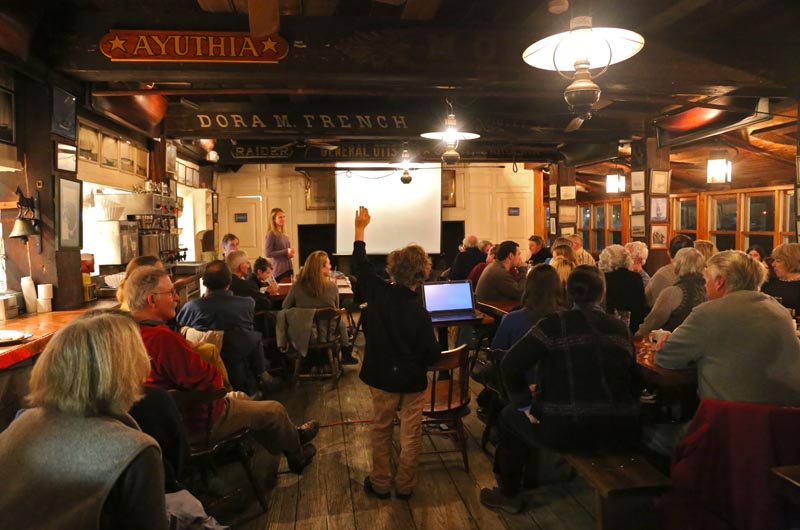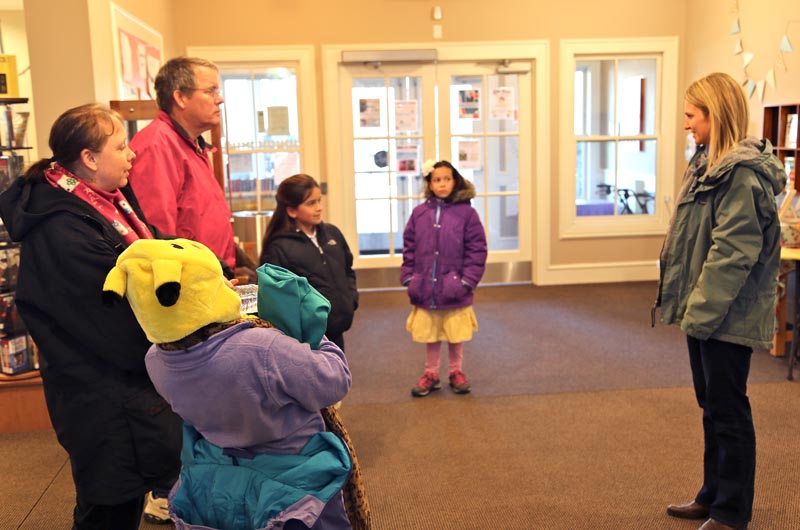As a high school student on the Vineyard, Megan Carroll had a strong interest in math and science. When it came time to think about college majors, a relative encouraged her to pursue mechanical engineering. She attended the University of Vermont where she met a close friend, also female, who was pursuing mechanical engineering.
“It’s nice to be able to form a bond with somebody who you are doing your courses with,” she said.
As she neared graduation and it came time to apply for jobs, Ms. Carroll looked to the Woods Hole Oceanographic Institution (WHOI).
“I have this memory in elementary school, going over and being very fascinated by what we saw,” she said. “It is probably because of that that I pursued a job there.”
For the past 15 years, Ms. Carroll, 38, has been commuting from the Island to WHOI, studying and working on deep-ocean research submersibles. Much of her work has focused on the Alvin, first commissioned in 1964, which has participated in thousands of dives around the world, including exploring the wreck of the Titanic. For the past two years, Ms. Carroll has focused on the Alvin’s syntactic foam, which provides buoyancy to the vehicle, focusing on its foam modules, shapes and blocks, as well as the adhesive that attaches them to the vehicle. Buoyancy allows Alvin to float to the top of the ocean’s surface once it is done working on the ocean floor.
“That was really a great project to be involved in,” she said. “It was very intense at times. When people are at sea you have to be available, especially when they are employing something that you designed. There’s a lot of risk associated with putting anything out in the water.”
The Alvin is currently rated to dive to 4,500 meters. Once funding and timing allows, stage two of its upgrade will enable it to dive to 6,500 meters.
“A question that’s been asked is why do you need to go to 6,500 meters,” said Ms. Carroll. “I don’t know if I can answer this properly but I know it’s the area that we know least about. There’s still a great area of our ocean at that depth, so being able to study it in great detail and understand how it is that these organisms are surviving...because there is no light, there is no oxygen.”
Several years ago, Ms. Carroll had the opportunity to spend two weeks at sea studying Alvin.
“It’s fascinating to see some of the work I’ve done and how it’s used out in the field,” she said. “You always get feedback but to actually be able to be there and witness how you could improve what you did or even something that may not have worked so well.”
Last week, Ms. Carroll talked about her work with submersibles and the recent upgrades to Alvin at a presentation sponsored by Sail MV and hosted by the Black Dog Tavern.
“I think people don’t realize that we know more about outer space than we do about the oceans,” said Matthew Stackpole at the presentation. “It’s really great that we are right next to one of the greatest institutions that helps us look to that.”
Several young attendees, future engineers perhaps, asked questions and offered suggestions for future upgrades to Alvin. Ms. Carroll said she enjoys sharing her work with the students who visit WHOI.
“I love getting kids involved at any level,” she said. “The students who are really interested in this type of work and giving them an opportunity to see what it’s like to be an engineer.”
This past Saturday afternoon Ms. Carroll met with several Junior Girls Scouts at the Oak Bluffs Library. After a quick meeting, the group headed to Dreamland to help with the Niantic Park Playground fundraiser.
For Ms. Carroll, volunteering for the Junior Girls Scouts gives her an opportunity to serve as a role model and positive influence for young girls. For someone who has spent years in a field dominated by men, this is especially important to her.
“For awhile I was the only female mechanical engineer in my department, but now there are two more females who work in my lab, so it’s great to see those numbers go up,” she said. “There’s definitely challenges, but Woods Hole is different than most of the industry. It’s a great community of scientists and researchers so it’s a bit of a different experience than it would be in a larger company.”






Comments (2)
Comments
Comment policy »